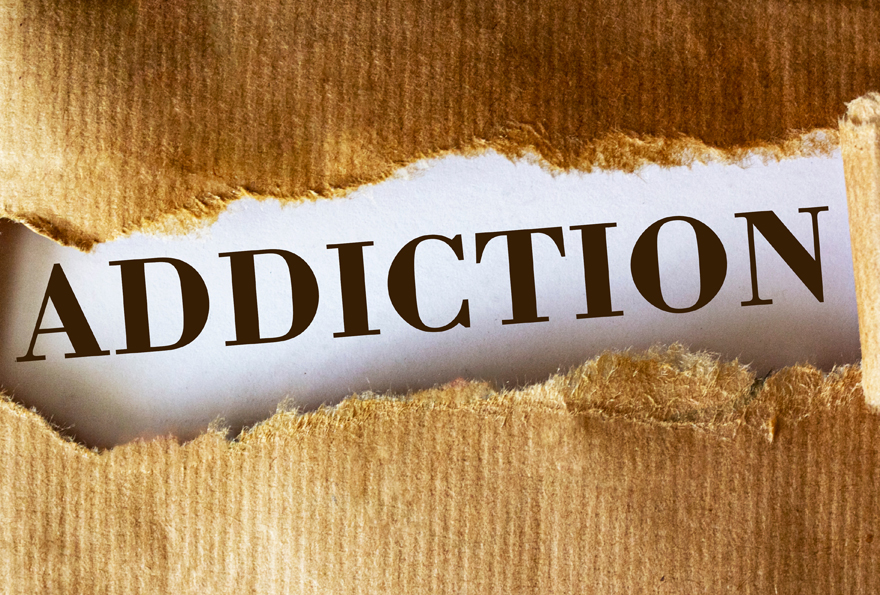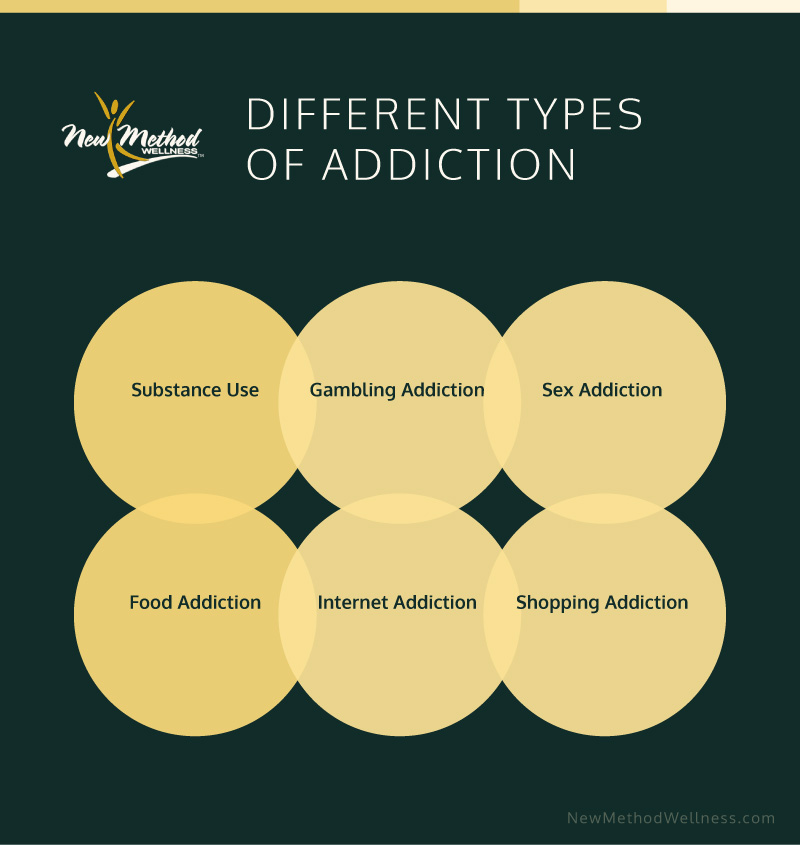
27 Apr Different Types of Addiction
When people think about addiction, they usually think about substance abuse. However, there are many types of addiction. It’s important to understand that addiction is a brain disease and not a personal lack of willpower or weakness. Compulsive behavior is strengthened by substance abuse as various substances rewire the brain. But, compulsive behavior doesn’t always require drugs or alcohol. Two types of addiction are recognized by professionals today:
• Chemical addiction
• Behavioral addiction
The first type is characterized by substance use. The second one involves compulsive behaviors that are carried out repeatedly even when they offer no benefit and even lead to negative consequences.
How Addiction Works
Before we discuss the different types of addiction, it’s important to know how this disease usually works. Addiction interrupts normal brain function, specifically in the reward area of the brain. For example, if you do something that you consider pleasurable such as shopping, drinking a bottle of wine, or using heroin, your brain’s reward system releases various chemicals, including dopamine.
Previously, it was thought that dopamine causes pleasurable feelings. However, experts now say that it appears that dopamine reinforces your brain’s association between feelings of pleasure and the things you find enjoyable. This reinforcement drives you to seek out these pleasurable things again and again.
How Cravings Work
One common element between types of addiction is cravings. Cravings are the strong urge or desire to experience something again. Cravings are often the first sign of an addiction. You may feel cravings in response to cues related to the pleasurable event or substance. As you continue using the substance or carrying out the pleasurable behavior, your brain keeps producing high amounts of dopamine. Eventually, it realizes that you have plenty of dopamine and begins to make less in response to the addictive behavior. The only problem is that your brain still needs the same level of dopamine as before. This leads addicted people to use more of the substance or do more of the behavior in order to get the same levels of dopamine. Acting on cravings leads to tolerance.
Losing Interest In Everything Else
As your addiction gets stronger, it’s common to lose interest in everything else you previously found enjoyable. This is because your brain is no longer producing dopamine in response to other triggers. The need for the addictive behavior or substance eventually leads to a loss of control. This happens when you start engaging in it uncontrollably. It’s common for people to want to quit or reduce substance use or addictive behavior, but they are unable to because nothing else makes them feel good.
Types of Addiction
Just about anything can turn into an addictive disorder, not just substance use. You can become addicted to exercise, or watching TV, or posting on social media. There are some key factors to consider if something is becoming addictive. These include the following:
• You can’t stop doing it
• Negative consequences for pursuing the addictive behavior
The negative consequences might be for you directly, or they might be for people around you.
Let’s take a look at some different types of addiction.
Substance Use
Usually, when people think about addiction, they think about drugs and alcohol. These substances have a direct impact on your physical and behavioral health. The chemicals in various addictive substances rewire your brain to help the addictive process along. The characteristic of substance addiction is developing a tolerance for the substance. Another hallmark is withdrawal symptoms when you stop or reduce substance use. However, substance abuse is not the only type of addictive disorder.
Gambling
Gambling addiction might be one of the most prevalent process addictions. It’s more common in men than women, but women often develop it faster. It might start out as desperation for money, or the euphoria of winning a lot of money in a random gambling outing. Winning leads to the desire to repeat that same high, so you keep going. Even when you start losing money, the craving for the winning high is stronger. Eventually, the gambler will start gambling more money than they can spare and feel unable to quit. Once you can’t quit, despite negative consequences, it’s considered an addiction.
Sex
Another very common addictive disorder is sex addiction. This includes watching or consuming porn as well as compulsive masturbation. Once again, the sex addict often feels less and less pleasure associated with the sexual content that they consume. This can lead them to engage in risky sexual behaviors as well as illegal ones.
Food
Food is a basic need, so it can be hard to identify a food addiction. However, eating does produce pleasure chemicals in the brain. This can especially be true with certain types of food like salty snacks and sweets. The food addict will start seeking out these pleasurable feelings by eating more often or more in one sitting. Food addiction can have a high health cost, just like substance use.
Internet
Being addicted to the internet is also quite common in the modern age. Like all the other types of addictive behavior mentioned, using the internet becomes so pleasurable for the addicted person that they can’t stop, and they eventually start ignoring everything else around them. Internet addiction can include any compulsive and excessive internet use, whether it’s social media, games, shopping, or even just browsing websites. If you can’t stop doing it despite negative consequences, it’s an addiction.
Shopping
Similar to gambling, a shopping addiction eventually results in losing money and racking up debt. A compulsive shopper might go to physical stores or shop online, or both. The feeling of shopping and bringing home purchases is pleasurable and compulsive.
Behavioral Addiction Signs
Behavioral addiction doesn’t have any official diagnostic criteria. However, there are a number of general signs that mirror substance use disorders. These signs include the following:
• Spending a lot of time engaging in the behavior
• Strong urges to continue the behavior despite negative consequences
• Using the behavior to manage emotions or behavioral health
• Lying about the behavior or hiding it
• Inability to stop the behavior
• Irritability, depression, or anxiety when not engaging in the behavior
How Addiction Treatment Helps
Substance use disorders almost always require professional addiction treatment. This is mainly due to the withdrawal process for most substances, and also because continued substance use is likely to be deadly with many drugs. However, as previously mentioned, addiction is a brain disease and there are often significant underlying issues that are leading to the addictive behavior. For example, the inability to cope with certain emotions can lead to addictive behavior. Cognitive-behavioral therapy is commonly used to treat addictive behaviors.
New Method Wellness is an addiction treatment center that specializes in dual diagnosis and treatment of behavioral health conditions and substance use disorders. Get in touch with us today to find out how our therapy programs can help.




